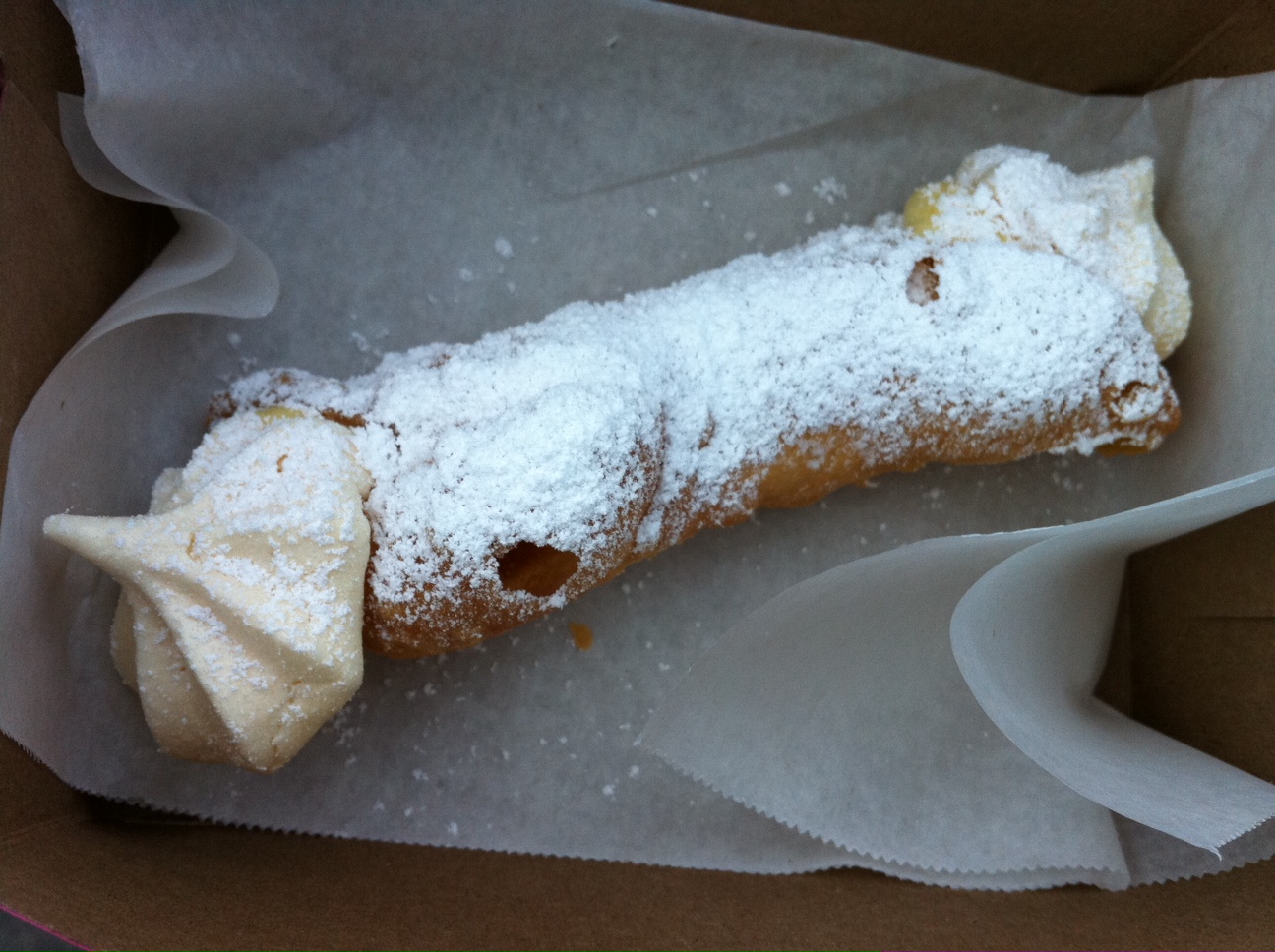 Not long ago, in the epicenter of Brooklyn's culinary scene, I had a delightful dinner in a place called Osteria il Paiolo. Williamsburg, Brooklyn, home to some of the world's hippest dining venues, is a multi-culti morass of righteous Jews, old-time Italians and Dominicans, and newly-converted food passionistas with young families and big dreams. It is also home to one of the only places I know that features polenta as its calling card, authentically made in an "il paiolo" -- a large unlined copper pot -- the traditional vessel in northern Italy in which to s-l-o-w-l-y stir ground cornmeal into boiling water and salt until thick and creamy. It is sturdier than porridge and more sublime than its humble ingredients might imply. I was no more than 19 years old when I first met its acquaintance during a trip to northern Italy. It was there that I had one of the my most memorable dishes of my life: A thick slice of Gorgonzola dolce onto which was poured a stream of hot buttery polenta across its girth. An exercise in simplicity, its creamy texture and unexpected melding of flavors and fragrances, was downright sinful. And while not the traditional form polenta usually takes, it remains a love-at-first bite memory.
While the good people of Tuscany are known as "bean-eaters" because of their culinary proclivity towards legumes, the Piemontese locals are known as polentone. Apparently, everyone in Piedmont eats polenta all the time, and have done so before the Roman empire! (At that time, polenta was made from other grains such as millet, barley, and farro. Corn, or maize, appeared in the 16th century.)
Not long ago, in the epicenter of Brooklyn's culinary scene, I had a delightful dinner in a place called Osteria il Paiolo. Williamsburg, Brooklyn, home to some of the world's hippest dining venues, is a multi-culti morass of righteous Jews, old-time Italians and Dominicans, and newly-converted food passionistas with young families and big dreams. It is also home to one of the only places I know that features polenta as its calling card, authentically made in an "il paiolo" -- a large unlined copper pot -- the traditional vessel in northern Italy in which to s-l-o-w-l-y stir ground cornmeal into boiling water and salt until thick and creamy. It is sturdier than porridge and more sublime than its humble ingredients might imply. I was no more than 19 years old when I first met its acquaintance during a trip to northern Italy. It was there that I had one of the my most memorable dishes of my life: A thick slice of Gorgonzola dolce onto which was poured a stream of hot buttery polenta across its girth. An exercise in simplicity, its creamy texture and unexpected melding of flavors and fragrances, was downright sinful. And while not the traditional form polenta usually takes, it remains a love-at-first bite memory.
While the good people of Tuscany are known as "bean-eaters" because of their culinary proclivity towards legumes, the Piemontese locals are known as polentone. Apparently, everyone in Piedmont eats polenta all the time, and have done so before the Roman empire! (At that time, polenta was made from other grains such as millet, barley, and farro. Corn, or maize, appeared in the 16th century.)
That said, I was excited to try the polenta, and all the other good things I had heard about, at the dining spot loosely translated as "the polenta pot." It is an osteria which, in Italy, connotes a rather casual restaurant where the owner is also the host: Enter Alex Palumbo. Alex, a native of northern Italy's Piedmont region, was primed to bring the signature dish of his family's kitchen to slightly tonier environs. Amidst a sprawl of white table-clothed tables in an industrial modern space, one can dine very well indeed. In addition to the myriad ways to eat polenta, topped with tomatoes and quail, with shrimp and rosemary, with fontina, are exemplary antipasti and main courses -- we especially loved the homemade sausage with savory cabbage served in a terracotta casserole, and my husband said his roasted quail, prepared with pancetta, cream and sage, was the best he ever had. Good, too, was the unusual pappardelle al cioccolata, chocolate pasta with a wild boar and vegetable ragu.
 Unbeknownst to me, authentic polenta is made with only water and salt, not the butter and cheese we have come to expect. But along the way, the latter ingredients have become commonplace. And while the ingredients may be 1-2-3, the mastery is in the preparation: Polenta must be slowly stirred for up to 45 minutes for its requisite creaminess and flavor. There are huge copper paiolo pots that have electric motors attached, but at Alex's osteria, everything is lovingly stirred by a mano (by hand.) Alex gets his heirloom polenta -- which is coarse and toothsome -- from a "secret source" in Italy and claims that no one else in New York (ergo the country) has it. At last count, the kitchen is stirring up more than 60 pound per month, up from 10 pounds when he first got started, not so long ago. Clearly, the locals are catching on.
Unbeknownst to me, authentic polenta is made with only water and salt, not the butter and cheese we have come to expect. But along the way, the latter ingredients have become commonplace. And while the ingredients may be 1-2-3, the mastery is in the preparation: Polenta must be slowly stirred for up to 45 minutes for its requisite creaminess and flavor. There are huge copper paiolo pots that have electric motors attached, but at Alex's osteria, everything is lovingly stirred by a mano (by hand.) Alex gets his heirloom polenta -- which is coarse and toothsome -- from a "secret source" in Italy and claims that no one else in New York (ergo the country) has it. At last count, the kitchen is stirring up more than 60 pound per month, up from 10 pounds when he first got started, not so long ago. Clearly, the locals are catching on.
In my own kitchen at home, I make polenta with tomatoes and Parmigiano-Reggiano as one of my ultimate comfort dishes, and on occasion, indulge in that time-honored memory of gorgonzola topped with steaming polenta. Only now I gild the dish with a tuft of balsamic-tinged wild arugula and anoint it all with my best extra-virgin olive oil on top. And I am still enamored of Colman Andrews' polenta with oranges and olive oil from his wonderful book, Flavors of the Riviera. The potential for polenta is promising, perhaps turning us all into polentone one day.
Osteria il Paiolo, 106 North 6th Street, Brooklyn, NY 11211 (www.ilpaiolonyc.com)













